One of the things I am fond of when it comes to cooking is using fresh herbs to flavor my dishes. Some of the standard varieties that I like to use are basil, rosemary, thyme and chervil.
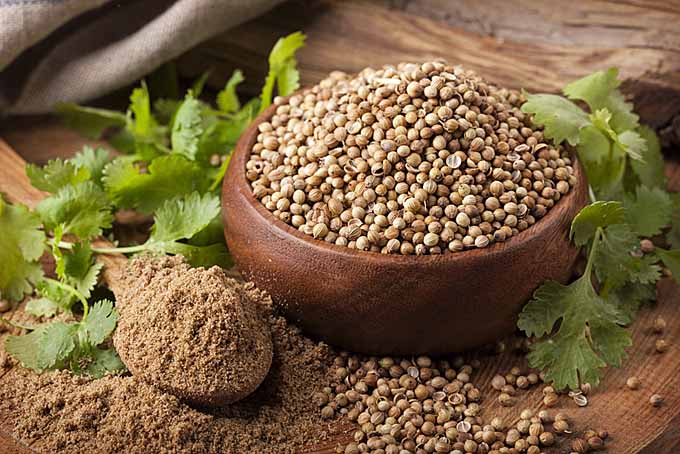
But there is another one that is worth stocking in your cupboard and adding to your repertoire. This is the fresh, peppery leaves of coriander, which often shows up in Asian or Indian cuisine.
You may also know this the spice as cilantro, its more common name in Latin America. The plant, which belongs to the family of umbellifers, is in blossom from June to August and can grow up to 25 inches.
It is cultivated all over the world, although its origin is the East Mediterranean area. The essential oils within the seeds can have a positive effect on stomach troubles and digestion, but they are also a great addition to aromatic dishes.

I incorporate this spice into a lot of my dishes. I like to use the leaves as additions to salads or Vietnamese meals, whereas I often grind some seeds with my mortar and pestle together with other spices and flavor my sauces, dips or soups. It has definitely become an indispensable part of my pantry.
The small seeds are light brown, globular and about 0.1-0.2 inches in size. Coriander can be bought and used in different variations:
Fresh (sold as cilantro in the US)
- It tastes lemony with a touch of freshly ground pepper and provides dishes with a hot yet refreshing and intense aroma.
- It is sensitive to heat, so it’s best to add when your dish is ready to serve, because the flavor will fade during the cooking process.
- Keep fresh bunches in your fridge, wrapped in moist paper towels or put into a glass of water. Or what about growing it at home yourself?
- Combine with: salads, rice dishes, fish, chicken, meat, and vegetables like carrots, peas, cucumber or sweet potatoes.
What to Purchase?
The freshest leaves that you can find at the store.
Whole Seeds

- As they withstand high temperatures, they can be cooked together with other ingredients.
- Roast in a dry pan before using or grinding to strengthen the flavor.
- They are the most long-lasting part of the plant. Keep in an airtight container in a dry and dark place.
- Need a place to store your dried spices? Check out Foodal’s review of the best spice racks.
- Combine with: stews, soups, curries, chutneys, pickles, and vegetables.
What to Purchase?

Try out Spicy World’s Corriander Seeds via Amazon. With four and five star reviews, you really can’t go wrong.
Ground (normally labeled as coriander)
- This is a common way of using coriander as a part of sauces or mixed spices like curry powder, but also a nice addition for marinades or dips in grilling season.
- This version loses its aroma most rapidly, so why not buy whole seeds and grind when needed instead?
- Combine with: mixed spices (like in the Moroccan spice blend ras el hanout), marinades, baked goods like gingerbread, sauces or dips.
What to Purchase?
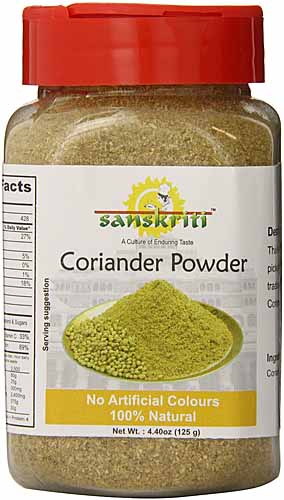
Try out Sanskriti Artisan Pure & Natural Spices Coriander Powder. Grown naturally on a small family farms in India, this brand doesn’t add any extra preservatives or chemicals when processing or packaging their product.
To get you cooking with coriander, I have chosen two recipes that are easy to make and that might be unknown to you.
Spanish Mojo Verde
Mojo verde is a Spanish dipping sauce that goes great with baked potatoes, toasted white bread or any kind of meat. It has a wonderful color and a fresh, spicy flavor.
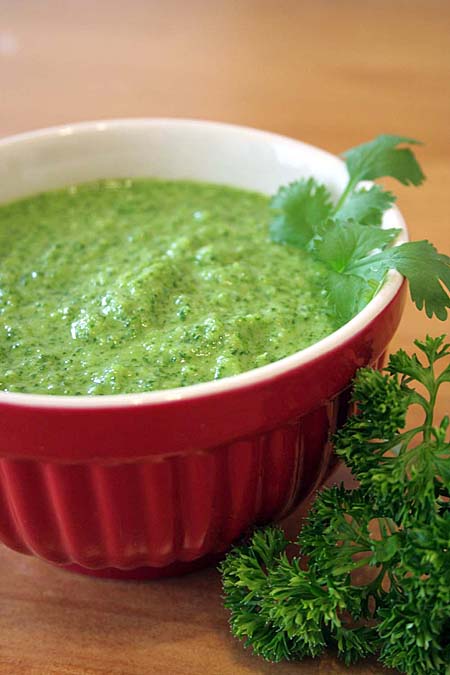
You can keep it in your refrigerator for up to two weeks.

After consumption, cover with some olive oil and plastic wrap to seal and place it back in the fridge.
- 2 cloves garlic
- 1 green bell pepper chopped
- 1 cup fresh cilantro chopped
- 1 cup fresh parsley chopped
- pinch of cumin seeds
- 4 tablespoons white wine vinegar
- 1/2 cup olive oil
- Salt and pepper to taste
- 1-2 tablespoons breadcrumbs (optional*)
- Peel the garlic and cut into thin slices. Grind the cumin seeds in a mortar and pestle. If you do not have one, ground cumin can be substituted (though the flavor will not be as aromatic).
- In an electric blender or food processor, puree the bell pepper with the herbs, garlic, ground cumin, and vinegar. Scrape down the sides with a rubber spatula. With the blender turned on, gradually add the oil in a thin stream until your desired consistency is reached.
- Season to taste with salt and pepper, and let the flavors meld on the counter or in the refrigerator for about 1 hour before serving.
*If you like yours more creamy and spreadable, add the breadcrumbs into the blender with the other ingredients.
Spicy Asian Oil
This Asian-influenced oil is an amazing idea for flavoring exotic dishes. Plus, it looks great and makes a wonderful homemade present.

Refrigerate for up to week or so. If you want to keep it for longer then you should substitute the fresh ingredients for dried/dehydrated versions to prevent botulism.
- 2 tablespoons coriander seeds
- 1-2 fresh chili peppers
- 1 thumb-sized knob fresh ginger
- 2 cups vegetable or olive oil
- 2-3 sprigs rosemary
- Salt and pepper to taste
- Roughly grind the coriander seeds in a mortar and pestle, and roast for 2-3 minutes in a dry pan.
- Wash the peppers and cut into thin rings. Peel the ginger and cut into fine strips.
- Place the seeds, peppers, and ginger in a saucepan. Pour the oil over the contents and apply very low heat for approximately 30 minutes. Keep an eye on it – do not let the oil get even close to boiling or reaching its smoke point.
- Prepare a pot of boiling water and fill the bottle/put it inside for about 10 minutes to sanitize, then empty it out and let it drain on a clean towel.
- Season the oil with salt and pepper. Wash and dry the rosemary.
- Place the rosemary sprigs into the bottle. Using a funnel, fill the bottle with the oil. Seal with a lid.
Recipe photos by Nina-Kristin Isensee, © Ask the Experts, LLC. ALL RIGHTS RESERVED. See our TOS for more details. Uncredited photos: Shutterstock.
About Nina-Kristin Isensee
Nina lives in Iserlohn, Germany and holds an MA in Art History (Medieval and Renaissance Studies). She is currently working as a freelance writer in various fields. She enjoys travel, photography, cooking, and baking. Nina tries to cook from scratch every day when she has the time and enjoys trying out new spices and ingredients, as well as surprising her family with new cake creations.

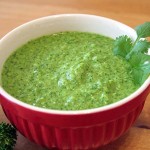
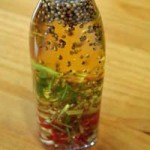
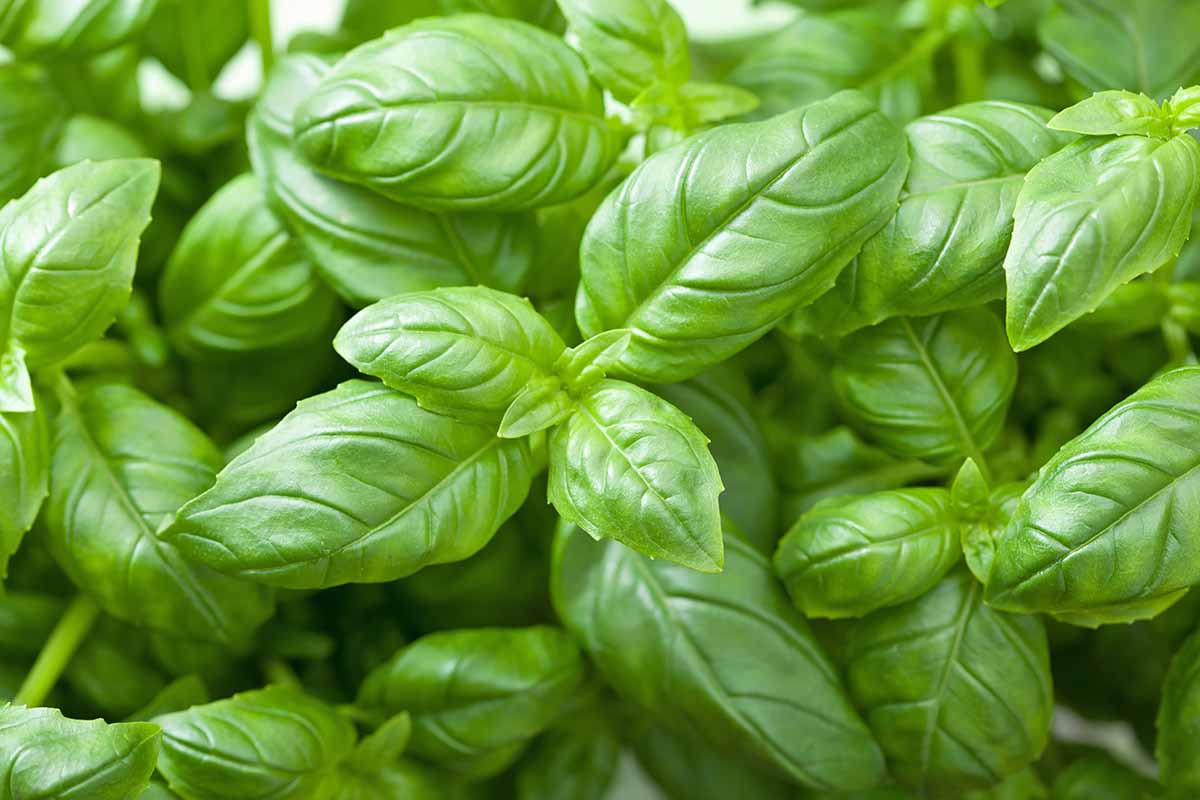
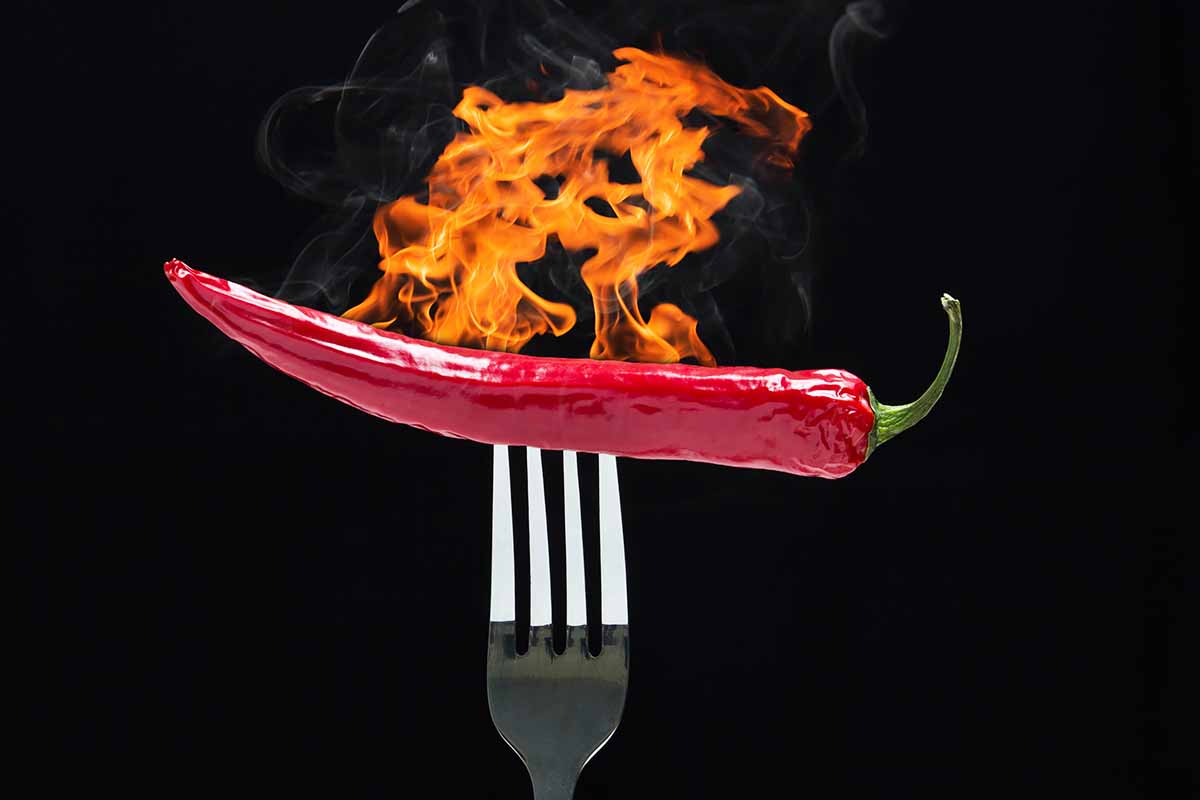
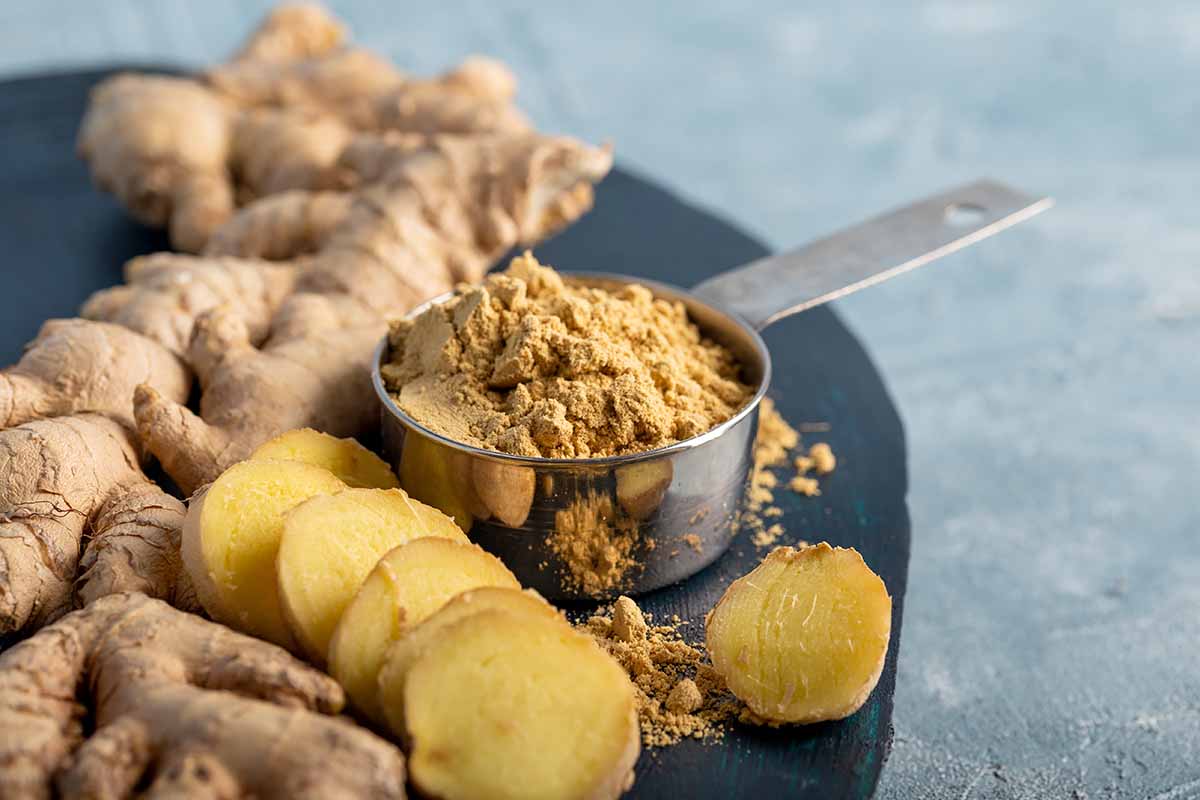
I personally love cooking with coriander. I prefer to use the seeds rather than the herb, purely because I enjoy using dry spices. One of my favourite things to do is boil some water with about a tablespoon of the powder as well as a teaspoon of cumin and turmeric and salt. It makes rice amazing and gives it a wonderful colour.
That is indeed a great thing to do, I also like to flavor and color my rice this way. It is just the perfect combination!
My wife and I love coriander and use it all the time. Here it is most commonly used fresh, both as a garnish and main ingredient. I find it goes best with beef or lamb, and my favorites are usually the simplest. One is made with thinly sliced strips of lamb, fried together with the slightly sweet red onion. After these are lightly cooked we take it off the heat, transfer it to a serving bowl, and add some fresh leaves that have just been pulled apart rather than chopped. After they are mixed, and left to sit for a few minutes, the herbal flavor leeches into the meat. it results in a really subtle taste, and is quite easy to make.
That sounds like a mouth-watering recipe. And you’re right, sometimes it doesn’t need lots of ingredients to make a fantastic meal. I think it is important that one can still taste the single components but also the interaction of flavors. And some fresh herbs can sometimes add the final touch to a dish.
I love cilantro, and use it in my Mexican and Vietnamese dishes. Sometimes I simply chew on it, because I love the flavor so much. I’m less familiar with coriander, so am glad I came across this article. Your recipes look interesting, and I want to try them both. I love the bottle in the picture, especially the red band on the top, which would signify to me that it was a hot oil. Does the oil need to be refrigerated, and is there a limited shelf life?
Yes, it’s best to keep it refrigerated and use up in a week or so; you can also prepare half or a third of the recipe if the original amount is too much for you to use.
But if you use dried or dehydrated ingredients to flavor it, it will have a longer shelf-life. You might have a look at the foodal article “How to Make Beautiful and Tasty Herbed Oils” for more information on that 🙂
I love this herb! I generally use cilantro as a topping for my omlettes, and it is often an ingredient for when I make falafel. It smells so divine when fresh, too. I’ve never attempted to cook with the whole seeds, however, and I’ve never seen them sold at my local grocery store. I’ll have to try them the next time I make a hearty stew.
Waaaiit, coriander and cilantro are the same thing!? I feel so silly now! All this time I’ve thought they were two separate things! Whenever a recipe has asked for coriander I’ve not known what exactly it was and went out to buy it; but I’ve always got cilantro on hand. This has been a really informative article (and not just on my silly mistake there, but in general). Thank you for the information!
For growing coriander, what season is best? We’ve been planting our garden at our new house and need a few more things to fill it up with. If now is a good season for it I’ll add it to the shopping list!
No reason to feel silly about that; when I first read about cilantro, I have to admit that I didn’t know what kind of herb it was because this name is so unfamiliar here in Germany.
All the better, we both now know what’s the deal with coriander and cilantro 😉
Concerning growing it: harvest time is between April and August while blossom time is from June to July. When you want to harvest the seeds, the plant needs lots of sun while you can grow it for the leaves in half-shade. (I hope these information are transferable from Germany to your location). But I think you can give it a try. One last tip: Coriander is a one-year plant, so you’d have to sow regularly for an ongoing harvest.
I dig the infused oil recipe. I have been making my own at home and cilantro lime oil has been fantastic for me.
You never really know how versatile an herb or spice can be until you look at how other cultures use it. From Asian to Latin cooking and everything in between coriander is used in several flavor combinations and methods. Vietnamese pho is my favorite for sure!
I have often been intimidated by cilantro’s strong flavor, when it comes to cooking. I never wanted it to over power the dish. I love the taste of it in salads, but the ground up version is often tasteless. I understand from your explanation that it loses its potency. I have never really used the seeds, so this can be a new adventure to me. It helps so much that you listed dishes you use this season in, because besides salad, I actually had no clue. Both the recipes are usable too.
I’ve really only had cilantro in salsas. It wasn’t a spice we used in our family, which is kind of a shame because I do enjoy it. I’ve never used the seeds in cooking, either, so now that I’ve read this article I’ll definitely have to try it out, since I know the fresh leaves are right up my alley.
I opened this article to find out what coriander was and it turns out to be cilantro! I’m very familiar with asian cooking so this is a herb that I know asians use. I’ve been to Taiwan and they love this stuff. It’s especially famous with their beef noodle soup. But there are many mixed feelings about this herb as many like it while others do not. For me, I’ve never gotten used to the taste of it (I can’t even describe the taste in words) so I don’t normally add it into my dishes. But I know people who dump loads of those in their dishes and love the aroma. So this is something if you haven’t tried it, I recommend you do. You’ll either will hate it or be your next favorite spice.
That is indeed right, it is one of those foods you really enjoy or you don’t like at all. In Germany, there is a strange synonym for coriander which would be translated literally with “bug herb” – apparently due to coriander’s bad smell. Personally, I can’t understand that because I think it smells really fresh and spicy.
So I agree that everyone should have a try and come up with an own opinion on its particular taste and smell 🙂
I love fresh cilantro and coriander. My boyfriend is a chef by trade and somehow didn’t realize they were the same plant, I was amused at least. Here in Arizona, it is in everything. Salsas, salads, soups, chicken, and garnish! I have met a few people who say they hate cilantro, that it tastes like soap to them, and always wondered why. They didn’t seem to feel the same about using coriander.
At the beginning, I had no idea that there is this kind of confusion between the both names. Maybe because I only know coriander and haven’t heard about the other one before where I come from.
It sounds funny and strange at the same time, that people didn’t like cilantro but the other “version”. It might be that sometimes – especially when it comes to food – our emotions influence our savor. Maybe the people you met have had bad dishes with cilantro and don’t feel that way about using coriander. That would be really interesting to know 😉
I never knew that another name for coriander was cilantro since it is the latter name I’m most familiar with. Whenever I go to a Mexican restaurant, I make sure to have some cilantro added to my dishes like tacos.
I cook with cilantro (coriander) as much as I possibly can. I am now growing it in my garden as well, so hopefully I will eventually be able to stop buying it from grocery stores! I love the flavor it incorporates. I will put it in soup, add to rice, salsa, even my pasta sauce!
That sounds great, good luck with the gardening!
I think having an own stock of spices like this at home is a wonderful way to use them more often than usual. It is just so handy. When the right time comes, I would like growing it, too, because it is somehow rare to get in grocery stores nearby. A coriander pasta sauce – yummy!
I’ve only ever used coriander fresh as a garnish, so this article gave me lots of good ideas 🙂 To be honest, I’ve always heard it called cilantro and didn’t even realize that it was the fresh version of the spice. I’d never heard of toasting spices to enhance the flavor either, I’m definitely going to try that. I love experimenting with different spices in my cooking so this was a great guide.
I’m happy that the article could give you some inspiration! Just yesterday, I used the spice for some Asian inspired burgers, it was delicious!
Also, enjoy toasting the spices – the smell is fantastic 🙂
I always used to wonder what cilantro was. It’s great to finally know. I know more than a few people in my family would be happy if I learned to cook with more spices and herbs in my food. And I certainly want to make my food more flavorsome and I look forward to experimenting a little more with coriander.
Great that this article helped you to find out about this spice/herb. It is perfect to try out new combinations as it suits lots of flavors. I’m sure you will find some ways to include this fresh and spicy variety to your cooking routine – and like it 🙂
Thanks for posting this! I didn’t know cilantro was the same as coriander. I use a lot of the fresh stuff when I make Indian or Thai food, or when I make street tacos at home. The Spicy Asian Oil looks like a good use for the seeds; I’ll have to make that sometime.
What other things can the seeds or powder be added to? Would it be a good spice to use on roasted vegetables or potatoes, perhaps?
Thanks HappyKoi, I’m happy you like the article. I love topping my Indian curries with some fresh coriander, that’s one of my favorites meals! The seeds are a wonderful addition to roasted veggies or potatoes, that’s right! I think they go especially great with carrots or other root vegetables. Whenever you’re looking for some exotic, spicy flavor, it is a good choice. Enjoy!
It is more accurate to say Mojo Verde is Canarian rather than “Spanish”